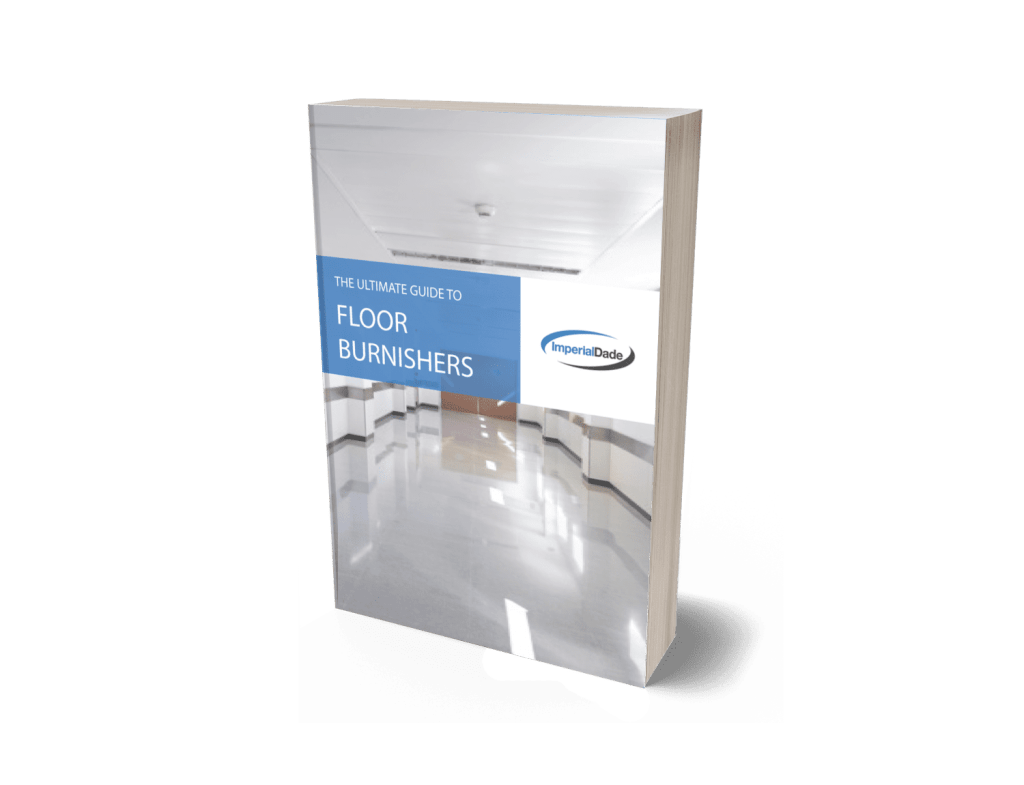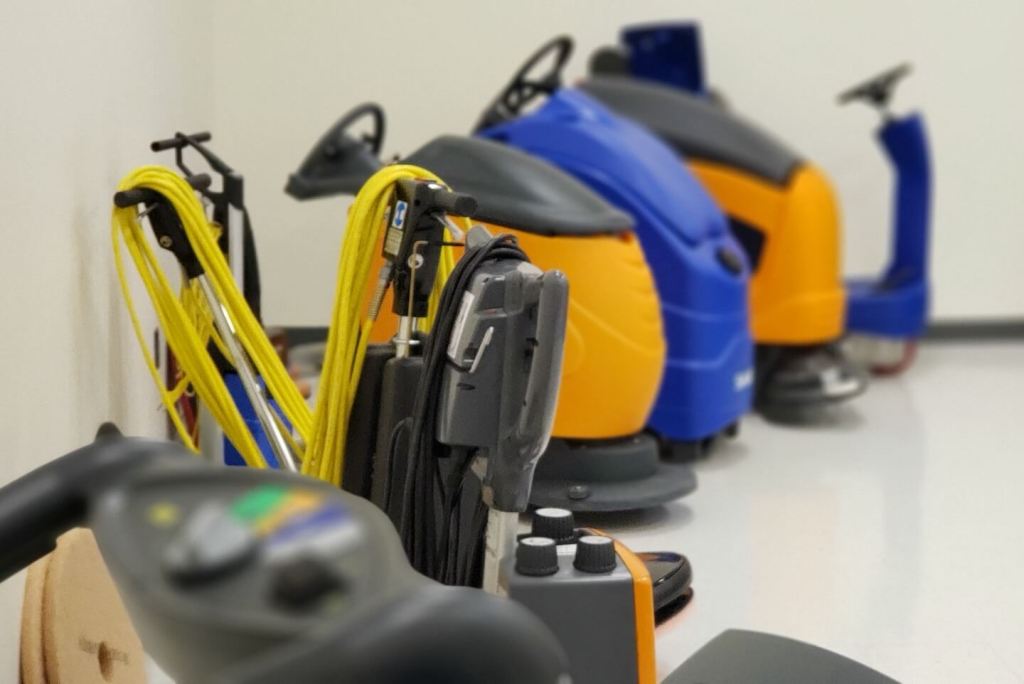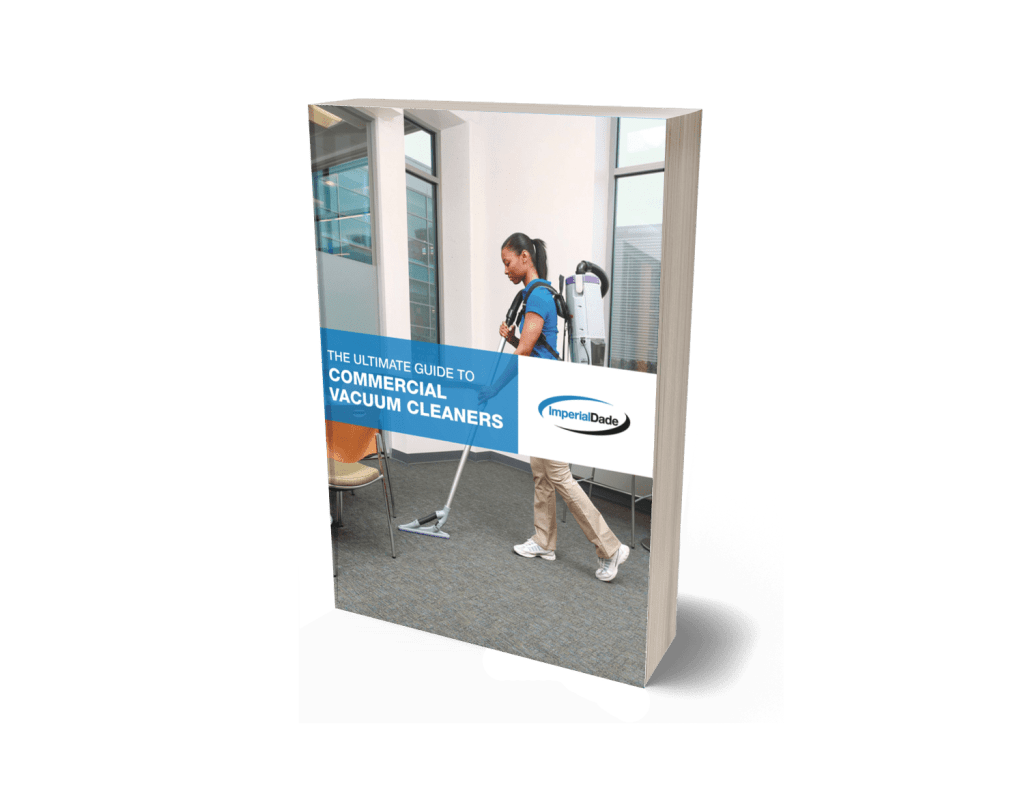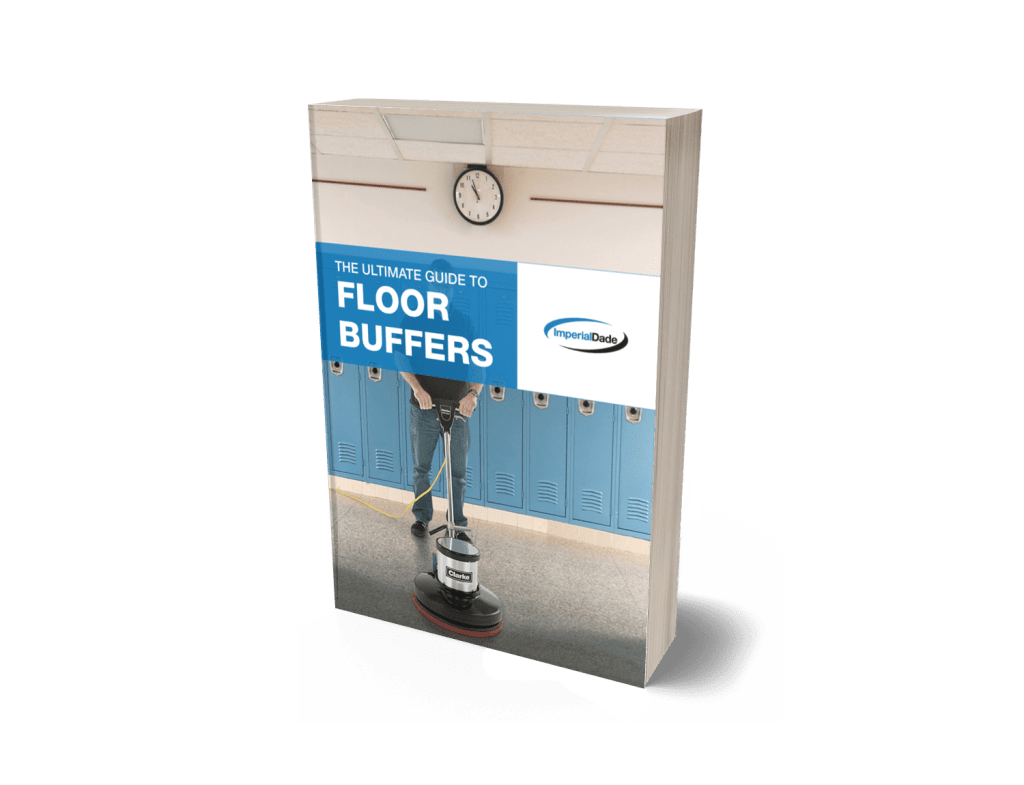Utilizing janitorial cleaning equipment in any area of your facility will lead to a more efficient and effective cleaning program. Cleaning and maintaining your facility’s floor can take up to 80% of your time. By using janitorial power equipment you can reduce cleaning time and increase productivity. Selecting the proper power equipment for your facility’s floor type and maintenance procedure, is critical to the success of your cleaning program.
Depending on the type of flooring, carpeted or hard, there are several different types of janitorial cleaning equipment to supplement your cleaning program.
Below we will go over some of the most common floor care equipment for hard and carpeted floor care.
Generally, in any commercial facility, vacuums will be the first step in maintaining an area. Vacuums remove debris and soil to prevent damage and reduce the need for deep cleaning.
Vacuums
For the maintenance of carpeted or hard floor surfaces, vacuums can be used in place of sweeping to boost cleaning efficiency and productivity. Vacuums quickly pick up dirt and debris that was tracked into the facility.
There are five primary types of vacuum cleaners:
- Handheld
- Backpack
- Canister
- Upright
- Wet/Dry
Depending on the type of vacuum they can be cord-electric or battery powered.
Each vacuum type excels in a specific type of area, performing a particular function. Make sure you are using the right type of vacuum for the floor-type, soil-type and area being cleaned. For example, backpack vacuums allow for easy maneuverability and increased safety on stairs and landings.
Hard Floor Care
Specific to hard floor care, janitorial power equipment such as floor scrubbers, buffers, and burnishers, can accelerate the required cleaning time and help to reduce costs.
Daily and periodic cleaning will maintain the appearance of your floors and reduce the need for restorative maintenance.
Not all hard floors are tolerant of the same industrial cleaning equipment. Check with your equipment manufacturer’s guidelines before using any cleaning equipment to avoid potential damage to your floors.
What is an automatic floor scrubber?
Floor scrubbers are machines that use a cleaning solution and scrubbing motion to lift residual soils off of cement, vinyl composition tile (VCT), rubber, ceramic, stone, marble, granite, or terrazzo flooring.
Scrubbers use one pass to apply a solution, clean, and remove the excess.
Scrubbers can be used to perform daily or periodic maintenance procedures.
 Scrubbers can be upright, automatic, or ride-automatic. To choose the best scrubber for your facility you must consider the size of your facility and what is occupying the area to be cleaned.
Scrubbers can be upright, automatic, or ride-automatic. To choose the best scrubber for your facility you must consider the size of your facility and what is occupying the area to be cleaned.
Depending on the type and size of the machine, they are designed to clean anywhere from 500 to 150,000 square feet.
But, just because you have a large facility doesn’t mean the largest scrubber is the right one for you. You must also consider the density of the space; is it largely open or are there multiple rooms such as offices or classrooms? A ride-on scrubber will not be able to maneuver in cramped areas or dense spaces.
Scrubbers are effective at increasing worker productivity and efficiency while decreasing the amount of strenuous work.
If you are interested in learning more about auto floor scrubbers, check out our article: What Is An Automatic Floor Scrubber (Types, Sizes, & Features)
Two additional pieces of power equipment that can be used for hard floor care are buffers and burnishers.
Buffers and burnishers are two different machines which perform different tasks. Understanding the difference between a buffer and a burnishers will help you achieve the best result from your maintenance procedure.
The differences between a floor buffer and a floor burnisher are the speed, motion, and floor maintenance procedures they complete.
Buffers are low speed and operate in a side-to-side motion and burnishers are high speed and drive straight.
Pro Tip: The success of any buffer or burnisher is dependent on selecting the right type of pad for the desired outcome.
What is a burnisher?
A burnisher will help you achieve a high-gloss shine on your resilient floors.
Burnishing refers to the polishing of floors at high speeds between 1000 and 3000 RPM, creating enough friction on the surface to soften and smooth the finish to create a shiny “wet-look”.
Burnishers can be cord-electric, battery operated, or propane powered.
They are available in traditional (basic) or advanced models.
They can be used for daily or periodic maintenance.
The frequency burnishing depends on the type of floor, hardness of the finish, and damage you are dealing with.
Burnishers rest on the back wheels and move in a straight line. On most machines only about 50% of the pad touches the floor.
The operator stands behind the machine and guides the machine forward. Some burnishers are ride-on that allow the operator to sit on the machine and maneuver it with hand controls.
Read More: What is the Difference Between Floor Buffers and Burnishers? [VIDEO]
Everything you need to know about commercial floor burnishers including types, sizes, specs, & more!

What is a buffer?
Buffers can be referred to as swing machines, side-to-side machines, or stripper machines.
Buffers are used when you want to strip the finish of a resilient floor. Depending on the pad applied to the machine, buffers can also be used to buff, clean, or scrub your facility’s floor.
 Buffers can be for daily, periodic, or restorative maintenance.
Buffers can be for daily, periodic, or restorative maintenance.
Buffing can be used to restore some shine to your floor, but it requires multiple passes with the machine.
Buffers operate at RPMs of 175 – 300 RPM.
All buffers are cord-electric but can have different motor sizes.
They are manually operated and require the machine to be propelled forward by the user. The operator stands behind the machine, fully balancing the machine on the rotating pad, creating 100% contact with the floor. Operators should not rest the machine on the hind wheels of a buffer. Buffer wheels are only used for transport.
Without the guidance of an operator, the machine naturally gravitates side-to-side, hence the nicknames swing machine and side-to-side machine.
Buffers and burnishers can provide exceptional productivity and labor savings as a result of their efficiency.
If you are interested in learning more about buffers, check out our article: What is the Difference Between Floor Buffers and Burnishers? [VIDEO]
Carpet Care
Carpet care is important to the appearance of the building. Carpets require daily, periodic, and restorative maintenance procedures. If carpets are not properly maintained they will become dull, stained, and damaged.
During routine carpet care, spotting can be used to remove small spills, spots, or stains from localized areas, but sometimes large discolored areas or stubborn stains will require a deeper clean.
When routine spotting is not enough, carpet extractors can be used during periodic and restorative carpet care to remove stubborn stains and restore the look of your carpet.
What is a carpet extractor?
Carpet extractors apply chemical solution, pressure, and suction to remove deeply embedded soils from carpets and upholstery. Some machines can also apply heat during the procedure.
This powerful piece of equipment is used when dealing with a tough stain or during  periodic maintenance procedures.
periodic maintenance procedures.
Carpet extractors usually have tank sizes ranging from 1 gallon – 28 gallons.
Smaller carpet extractors are lightweight and portable canister-type machines. Smaller machines are best used to spot clean small areas of carpet and upholstery. Depending on the size of the machine, carpet extractors can be walk behind or ride-on.
The largest available carpet extractors are ride-on.
The larger the tank size the larger the area you will be able to clean without having to stop and empty the recovered solution.
Carpet extractors can be battery operated or cord-electric.
Using carpet extractors can reduce the damage to your carpet, extend carpet life, and protect your investment.
If you are interested in learning more about carpet extractors, check out our article: Commercial Carpet Extractors: Types, Sizes, & Features
Final Thoughts
Imperial Dade has a variety of industrial power cleaning equipment options to increase productivity and lower cleaning costs.
If you’re located in the United States, Puerto Rico, or the Caribbean, we can provide your facility with the best power equipment so your staff can efficiently clean the floors of your building. Contact an Imperial Dade Specialist for help finding the best power equipment for your facility.




